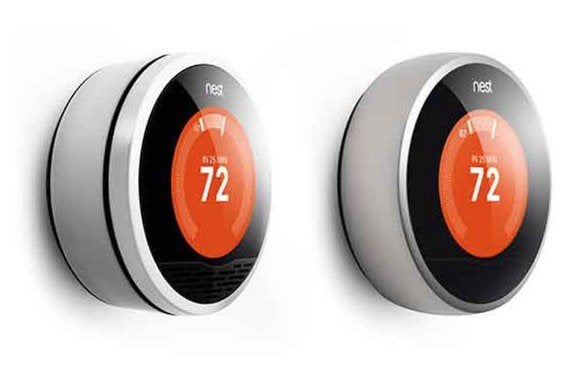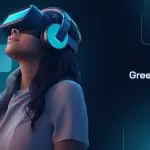You won’t find anywhere in the universe more welcoming to Glass than ’s I/O conference in San Francisco. So why wasn’t the technology even mentioned during ’s keynote address?
As rolled out new platforms for the television, the car, wearables (including fitness devices), as well as an aesthetic functional redesign of Android, some of its more famous projects—like Glass, or its + network—were conspicuously absent. so MIA were projects that ’s been kicking around for years, like the perennial autonomous car.

Android Auto is nice, but what about the autonomous car?
isn’t necessarily obligated to update attendees on its moonshots. But for products that are shipping, or are presumably about to—Glass, for example—you’d expect at least some updates. For example: an explanation of how Glass will interact with ’s two new wearable platforms, Android ar Fit.
For the two days that has the tech world’s eager attention, the company has an opportunity to show a receptive audience how products like Glass + could fit into its big-ecosystem picture. Instead, we’re left with open questions about where these projects are going. And history has proven that products doesn’t talk about can quietly die, too.
Android ar, Glass?
At I/O, showed off both Android ar Fit—basically Android designed for smartwatches fitness trackers, respectively. Add Glass, with its own set of “Glassware” apps, you’ve got three sets of devices, with three (apparently) discrete platforms.

Android ar, Fit, Glass—how will they all get along?
On stage, executives sold Android ar as an opportunity to avoid fumbling about in your pocket for your smartphone, as a glanceable interface for quickly communicating important information. But those are also the selling points of Glass, though Glass adds the ability to shoot photos video. Glass, ar, Fit all tap into the smartphone, which serves as a central communications hub for all three efforts. Yet never discussed the potential for this four-piece ecosystem, that’s baffling.
know that Glass will get Android ar’s notifications capability in the near future, so there are clear ties between the three platforms. But it just seems odd that we’re left to draw these lines between these disparate devices, without bothering to explain the distinctions.
Some questions I have: Can Fit use the G device in Glass to calculate the distance I’ve jogged? And with designer versions of Glass already available, could a sport-Glass derivative be far behind—one that could communicate with a Fitbit, throwing up a real-time step distance monitor in the corner of your eye? How does it all fit together?
+: the social network that time forgot
If there’s one trend I noted throughout the I/O keynote, it’s that ’s newest technologies facilitate interaction with you, your data, , its partners. ss was said about interaction with other users, such as one might do on a social network like +.

+: gone but not forgotten. Right?
In April, Vic Gundotra, who ran +, abruptly left. And the social platform, while allegedly capturing “hundreds of millions of users,” still hasn’t managed to put a serious dent into Facebook, although it’s evolved into both a photo repository an identity management solution. Vibrant + communities do exist, but are centered more around technology enthusiasts than regular folks.
I don’t see that changing. The notion of sharing anything via seems to be slowly fading, while the notion of storing all your digital data on is gaining momentum. As of dnesday, you can pay $10 per month receive unlimited cloud storage. And the bar will undoubtedly come down from there.
Android@Home, Nest
In 2011, announced Android@Home at I/O. “ want to think of every device in your home as a connection to Android apps,” said Hugo Barra, product management director for , at the time.
partnered with ghting Science, a manufacturer of lighting products, to develop light fixtures that could be controlled by an in-home wireless network. Since then, we haven’t heard anything about Android@Home or any partnerships in the space.

Is this the central hub of the connected home? ‘d like to know.
You can argue that instead of designing a wireless interface for the connected home, simply bought everything in it. bought Nest, Nest, in turn, just bought Dropcam. But Android@Home remains nowhere to be found, said not a word about Nest or Dropcom—or the connected home concept—at I/O this week.
The acquisitions give ownership of two of the most high-profile connected products out there, more purchases may be in the offing. Nevertheless, neglected to mention any of its recent efforts in the connected home space, nor any plans about how it plans to go forward. The omissions were glaring.
Quiet deaths
The jury’s still out on whether + will be retired or morphed into something else, like a simple platform for maintaining all our identities across products services. But if + quietly fades away, it wouldn’t be the first product to do so. is heartlessly Darwinian in its approach to products. Once announced, they seem to be given an update or two, then evaluated. If they fail to deliver, they’re left to wither eventually die.
launched TV a few years back. Today, it was kicked to the curb in favor of the new Android TV. The collateral damage was gitech, whose gitech Revue set-top box bore the brunt of TV’s failure.

This is the man we hoped to hear from today.
And there’s more: titude. Reader. Knol. Buzz. bs. ve. l of these quietly died within , usually marked with a brief blog post some online lamentations.
I’m not trying to suggest that Nest or Dropcam are dying, or dead. That’s ridiculous. But I have a Nexus Q sitting by my desk, too. In 2012, delayed the high-profile streaming media device to, as the company said, “make it even better.” Instead, it took it behind the barn shot it.
en the I/O buzz dies down, consumers developers will have to decide whether to buy into ’s future vision—a decision made harder when itself doesn’t lay it out for us. I would have liked to have seen someone, especially rry ge, come out on stage tell us what products we’ll be using in five years.
Because what doesn’t talk about is sometimes dying, or already dead.







